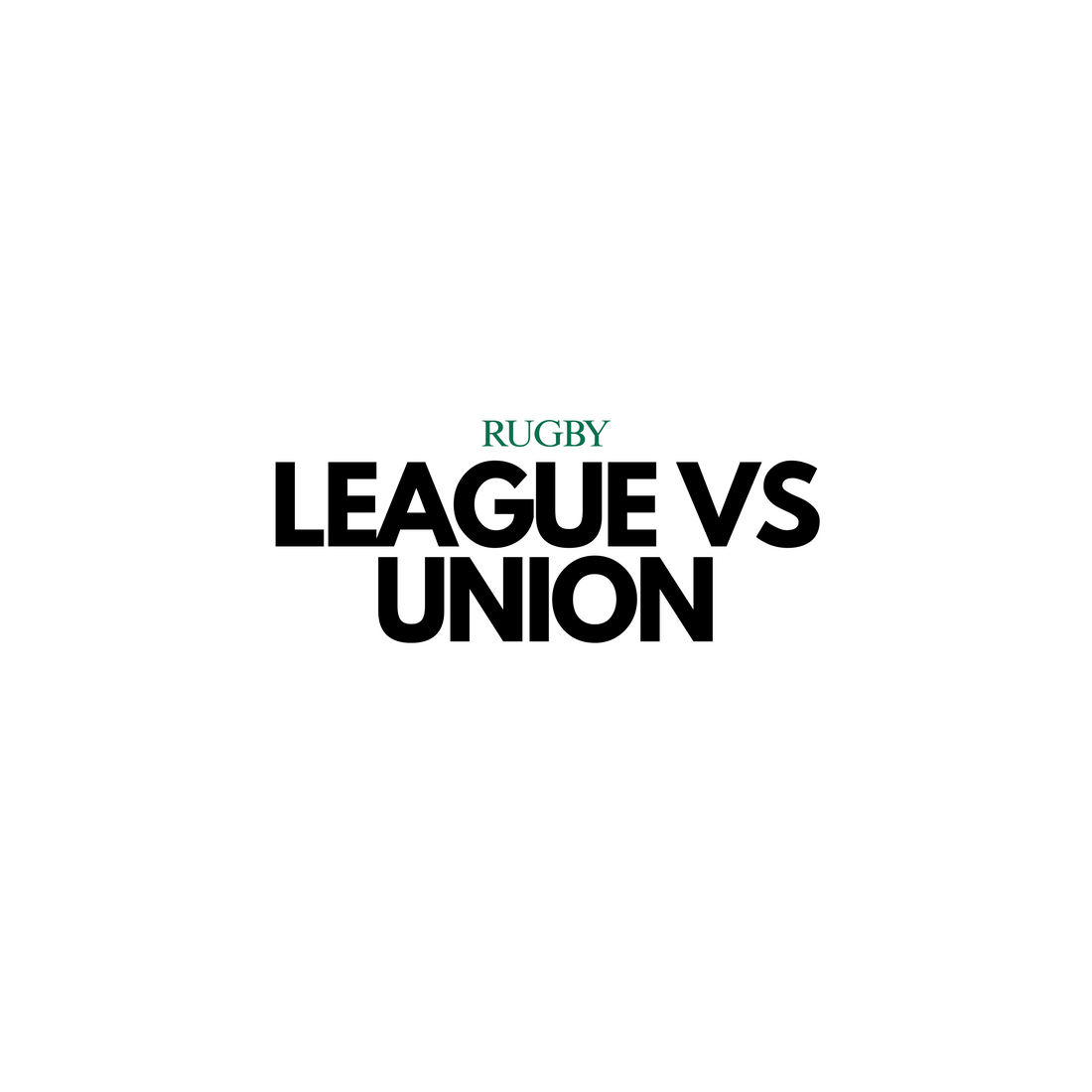
Rugby League vs Rugby Union
Share
Rugby League and Rugby Union are two distinct forms of rugby, each with its own set of rules and gameplay style. While both games share a common origin and some similarities, they have several key differences that make them unique. Here’s a breakdown of the main distinctions:
________________________________________________________________________________________________
1. Number of Players
Rugby Union: Played with 15 players per side. The game features more forwards and a greater focus on contesting the ball in scrums, rucks, and mauls.
Rugby League: Played with 13 players per side. The game has fewer forwards and more emphasis on speed and open play.
________________________________________________________________________________________________
2. Scrums
Rugby Union: Scrums are a significant part of the game and are used to restart play after minor infringements like a knock-on or forward pass. The scrum involves all eight forwards from each team binding together and contesting possession.
Rugby League: Scrums are much less contested and are used more as a method of restarting the game. The forwards do not bind in the same way, and possession is usually retained by the team that was awarded the scrum.
________________________________________________________________________________________________
3. Tackling and Play the Ball
Rugby Union: After a tackle, players can contest the ball by forming a ruck or maul, where the ball is either on the ground or held up. The game encourages prolonged phases of possession and is slower in tempo due to these breakdowns.
Rugby League: After a tackle, the player must "play the ball" by standing up and passing it backward to a teammate. There are no rucks or mauls in Rugby League, making the game faster and more continuous.
________________________________________________________________________________________________
4. Phases and Possession
Rugby Union: Teams can retain possession for long periods, with multiple phases of play involving rucks, mauls, and scrums. If the ball is not won, possession can change quickly, but it’s more common for teams to work through numerous phases.
Rugby League: Teams are limited to six tackles before possession is turned over to the opposition, even if they have not scored. This system encourages faster play and more dynamic ball movement.
________________________________________________________________________________________________
5. Set Pieces and Restarts
Rugby Union: The game has more set pieces like scrums and lineouts (where players lift teammates to win the ball thrown in from the sideline).
Rugby League: There are no lineouts in Rugby League. Restarts are simpler, typically involving a tap (where the ball is tapped on the ground to restart play) or a scrum with minimal contest.
________________________________________________________________________________________________
6. Scoring
Scoring |
Rugby Union |
Rugby League |
|
Try |
5 points |
4 points |
|
Conversion |
2 points |
2 points |
|
Penalty Kick |
3 points |
2 points |
|
Drop Goal |
3 points |
1 point |
________________________________________________________________________________________________
7. Offside Laws
Rugby Union: Offside laws are more complex, particularly at the breakdown. Players must be behind the ball when it is played, and any players ahead of the ball are considered offside.
Rugby League: Offside laws are simpler, with players needing to be behind the ball at all times and the "play-the-ball" scenario ensuring that the game is continually moving forward.
________________________________________________________________________________________________
8. Field Size
Rugby Union: The pitch is generally larger, measuring up to 100 meters long and 70 meters wide.
Rugby League: The field is slightly smaller, typically 100 meters long and 68 meters wide.
________________________________________________________________________________________________
9. Rugby Union’s Set-Piece Focus vs. Rugby League’s Open-Play Focus
Rugby Union: The game tends to be more tactical and set-piece focused, with scrums, lineouts, and set-piece plays being essential to the structure of the game.
Rugby League: The game is more about continuous open play, with less reliance on set pieces and more emphasis on ball movement, running, and tackling.
________________________________________________________________________________________________
10. Global Popularity
Rugby Union: Rugby Union is more widely played globally and is the dominant form of rugby in countries like England, New Zealand, South Africa, Australia, and France. The Rugby World Cup is one of the sport’s premier international events.
Rugby League: Rugby League is more popular in Australia, New Zealand, and the United Kingdom, particularly in the northern England region. The Rugby League World Cup is the main international competition for the sport.
________________________________________________________________________________________________
Conclusion
While Rugby Union and Rugby League share a common origin, they have distinct rules and styles of play. Rugby Union is more focused on set pieces and tactical play, while Rugby League is faster, with an emphasis on continuous open play and quick ball movement. Both games offer exciting, action-packed experiences, and their differences provide fans with a variety of ways to enjoy rugby.
